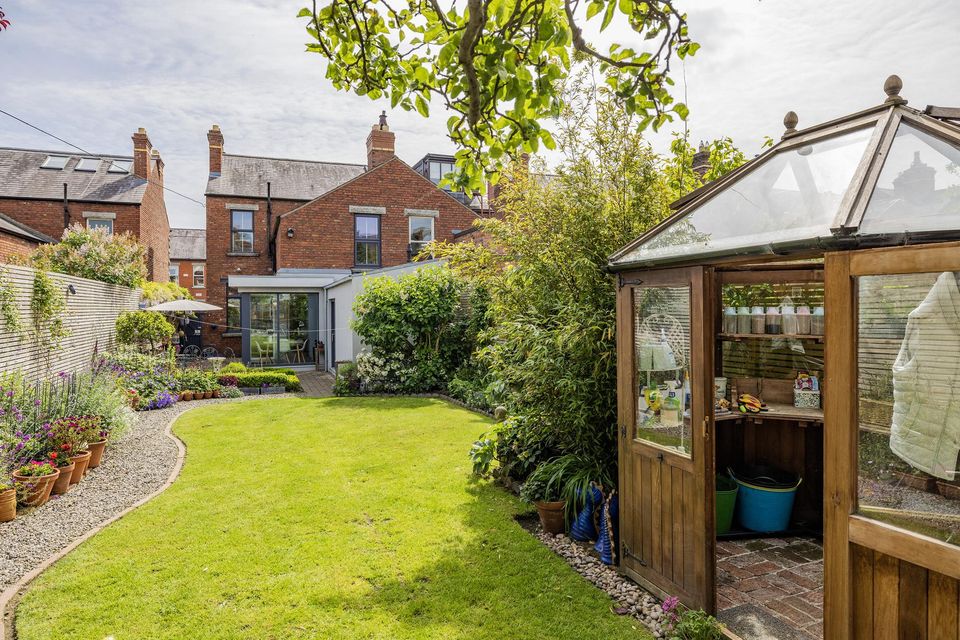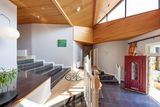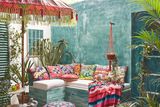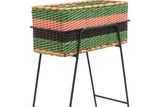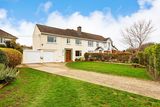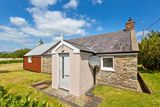A house divided stands as one again in Glasnevin
When two siblings fell out it was up to a husband and wife team to put this period home back together
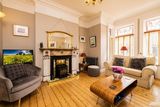
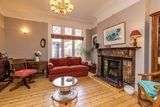
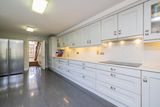
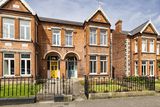
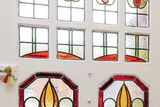

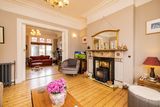

24 Iona Drive, Glasnevin, Dublin 9
Asking price: €1m Agent: Move Home (01) 884 4690
When Anne and Martin Farrelly bought their 100-year-old period red brick house at Iona Drive in Dublin’s Glasnevin, it had only ever been owned by one family. But like that family, it was split.
Brother and sister siblings had inherited the house they had grown up in but had subsequently fallen out with one another. Their solution for living together under the same roof in harmony was to divide it; the sister lived in her portion and the brother in his.
Anne Farrelly and her dogs. Photo: Bryan Meade
That unusual configuration is what the Farrellys encountered when they first parked up beside it in 1994, already eager to buy No24, despite not having set foot inside.
“At that time the price of houses was going up and up, and we had gone after one on another road nearby and we didn’t get it,” Anne recalls. “This one came up and we knew it was in really bad condition, but we pulled up outside and my husband said, ‘if we don’t get this, we won’t get into the area. I promise I’ll do everything to it’.”
The dining room with open fire
Martin wasn’t aware of just what lay beyond the hall door and the scale of his commitment, but he stayed true to his word and worked away on it for 11 years.
“It was only ever in one family before us,” says Anne. “The parents had died and there was a son and a daughter living here. They didn’t get on so the house was divided in two. In the hallway there was a second door to the upstairs to make two dwellings above and below.
Read more
“We just didn’t realise what a huge amount of work we were taking on. Nowadays people get a builder straight in and they move out while the work is going on. We couldn’t afford that so we did it piecemeal. We had builders come and go, but Martin was also brilliant at doing everything. I used to call this house a black hole. Money in would just disappear. We rewired, we replumbed, we replastered, we did everything.”
The kitchen
Early on they renovated the kitchen which at the time was just a small scullery room with a breakfast room attached. Beside the breakfast room was a small room that would have belonged to the maid. The maid’s bell is still by the fireplace in the living room.
The bell is a fascinating reminder of the history of these houses, the first upwardly mobile people to live in them and the man who built them.
Alexander Strain is something of a legend. Despite building most of his quality homes over a century ago, his reputation lives on as a marque of quality. Some of his best work can be seen on the roads around Iona Church, where the Catholic middle classes opted to live when access to education after Emancipation saw them take better jobs.
The exterior of No24 Iona Drive, Glasnevin
They targeted the stylish houses built by Strain. The census of 1911 shows at least one live-in maid in the homes around Iona Drive while other households would have had maids in during the day.
“We extended the kitchen in 2015,” she says. “It was a big job. We made the two rooms into one and put in a nice bay breakfast area which is really bright and warm, and it opens out on to the garden. We chose the units carefully so that they would go with the old house and I love them.”
Sadly, Martin passed away a few years ago and now the house is too big for Anne so she’s decided to trade down.
Stained-glass windows in the front doorway
No24 is substantial with a total floor area of 1,647 sq ft. Through the front door with its stained glass is the hallway with the original wooden floor, ceiling coving and centre rose. To the right is the living room with the original marble fireplace, picture rails and coving and a bay window with glass inset. This has double doors into the dining room that also has a marble fireplace.
Old meets new on the lower ground floor with the newly extended kitchen with units by Woodworks. The utility off the kitchen allows Anne to hide the washing machine, dryer and her dogs’ paraphernalia.
The garden and extension at the back of the house
Upstairs on the first-floor return is a double bedroom and a bathroom with corner shower. On the first floor are two more bedrooms, both with original wooden flooring and cast-iron chimney pieces that were restored by Martin. The attic can be accessed by a Stira on the landing. It’s large enough to be converted into a fourth bedroom.
Anne’s ‘happy place’ is the 60ft by 30ft garden. “The sun goes around it. The patio is a lovely place to sit and have your morning coffee. It’s west-facing, so that’s where all the plants and flowers grow.” There’s also shed from Boyne and a greenhouse.
The interconnecting receptions
Selling up wasn’t an easy decision for Anne because the house is full of memories of Martin.
“Everything about the house is my husband but I know he’d want me to move on,” she says. “I want to get something smaller and enjoy it, but I don’t want to go far. It’s the best location. I’m 10 minutes from the Mater, 10 minutes to the M50, the Botanic Gardens is just up the road and if I’m going into town, I always walk. I only use my car now when I’ve to bring the dogs with me.”
No 24 Iona Drive is guiding €1m with first views tomorrow through Move Home Estate Agents.





